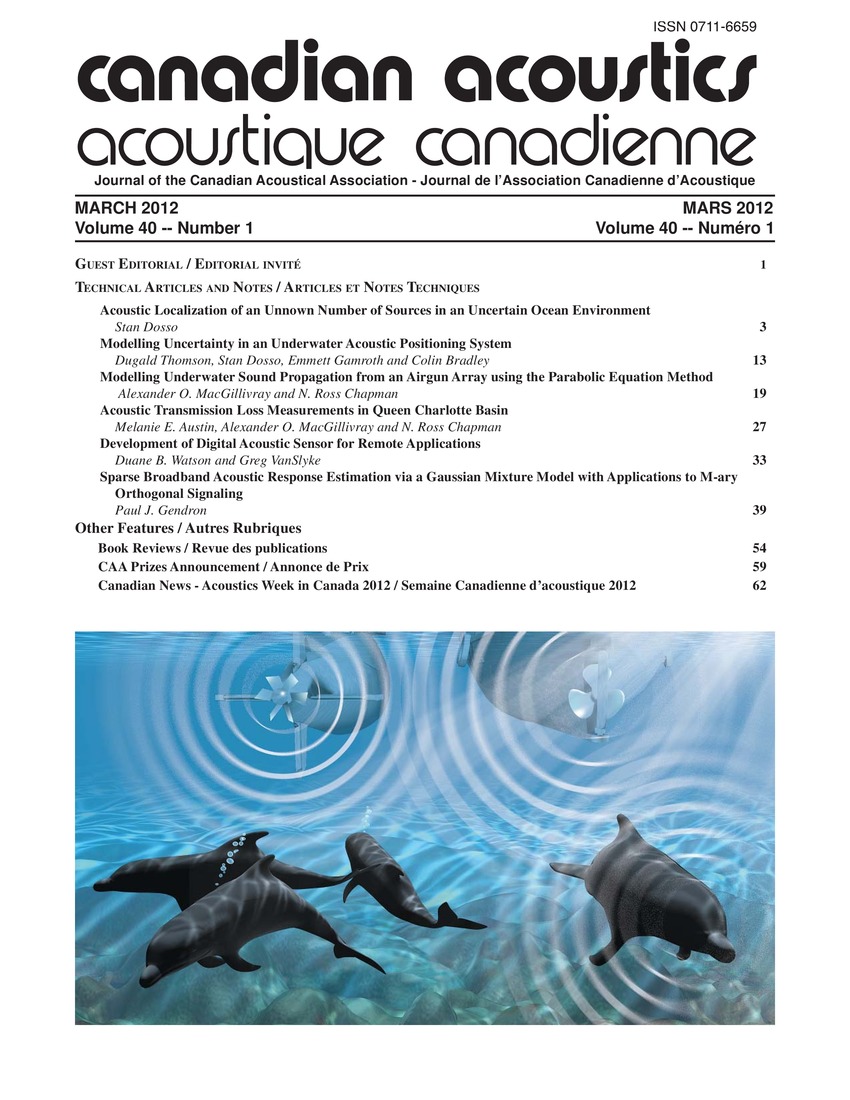Modeling underwater sound propagation from an airgun array using the parabolic equation method
Keywords:
Acoustic wave propagation, Partial differential equations, Starters, Air guns, Airgun array, Angle-dependent, Far-field, Normal modes, Ocean environment, Parabolic equation, Parabolic equation method, Parabolic Equations, Phase shifted, Pressure waveforms, Sound propagation, Underwater sound propagation, Wave formsAbstract
This article presents a technique for modeling sound propagation from an airgun array, using the parabolic equation (PE) method, that takes into full account the far-field, angle-dependent radiation pattern of the array. This is achieved by generating a PE starting field for the array by summing together shaded, phase-shifted replicas of the PE self-starter. The array starter has been implemented using the RAM parabolic equation model. A validation comparison is presented of field predictions generated using the array starter against exact normal mode solutions for an array source computed using the ORCA model. Examples of synthetic waveform airgun array calculations performed using the array starter are also provided. The method presented in this article can be used to accurately predict pressure waveforms from an airgun array in the ocean environment provided that the modeler knows (or can compute) far-field source signatures for individual airguns in the array.Additional Files
Published
How to Cite
Issue
Section
License
Author Licensing Addendum
This Licensing Addendum ("Addendum") is entered into between the undersigned Author(s) and Canadian Acoustics journal published by the Canadian Acoustical Association (hereinafter referred to as the "Publisher"). The Author(s) and the Publisher agree as follows:
-
Retained Rights: The Author(s) retain(s) the following rights:
- The right to reproduce, distribute, and publicly display the Work on the Author's personal website or the website of the Author's institution.
- The right to use the Work in the Author's teaching activities and presentations.
- The right to include the Work in a compilation for the Author's personal use, not for sale.
-
Grant of License: The Author(s) grant(s) to the Publisher a worldwide exclusive license to publish, reproduce, distribute, and display the Work in Canadian Acoustics and any other formats and media deemed appropriate by the Publisher.
-
Attribution: The Publisher agrees to include proper attribution to the Author(s) in all publications and reproductions of the Work.
-
No Conflict: This Addendum is intended to be in harmony with, and not in conflict with, the terms and conditions of the original agreement entered into between the Author(s) and the Publisher.
-
Copyright Clause: Copyright on articles is held by the Author(s). The corresponding Author has the right to grant on behalf of all Authors and does grant on behalf of all Authors, a worldwide exclusive license to the Publisher and its licensees in perpetuity, in all forms, formats, and media (whether known now or created in the future), including but not limited to the rights to publish, reproduce, distribute, display, store, translate, create adaptations, reprints, include within collections, and create summaries, extracts, and/or abstracts of the Contribution.


